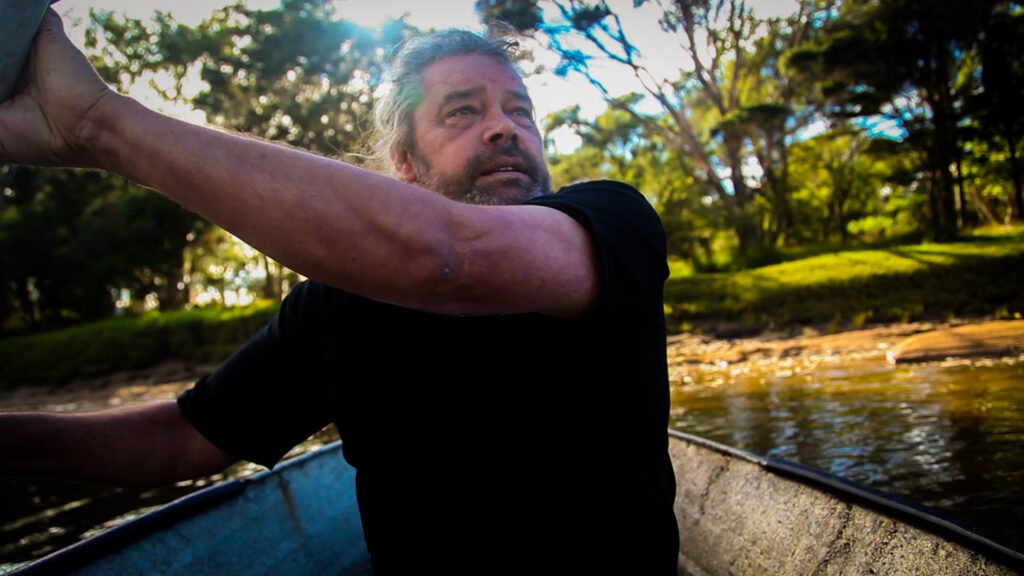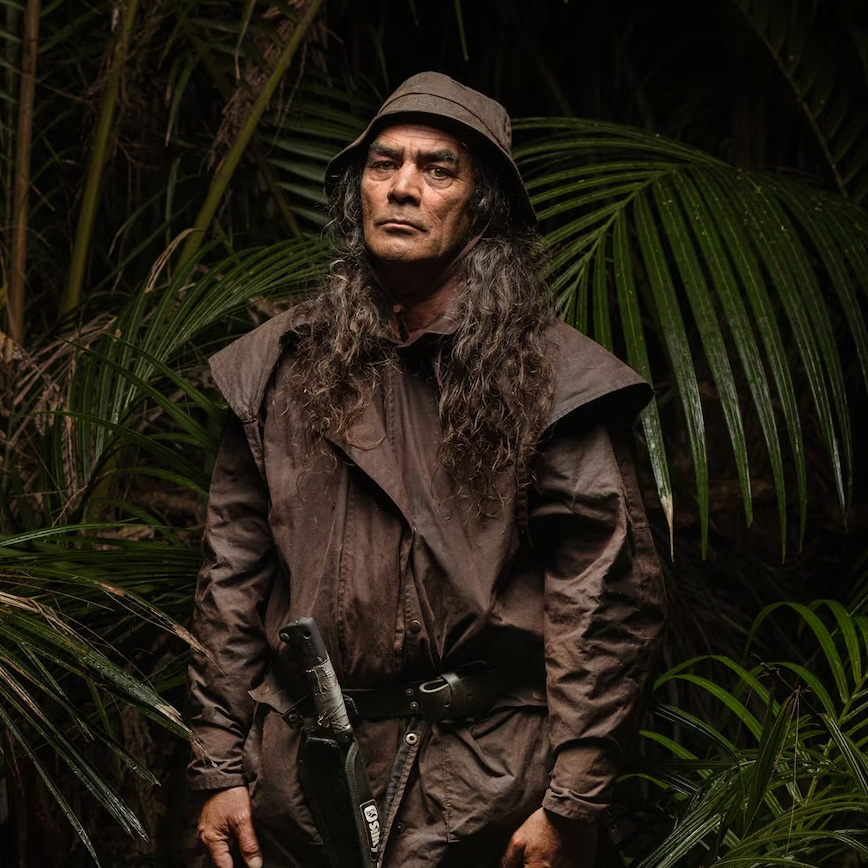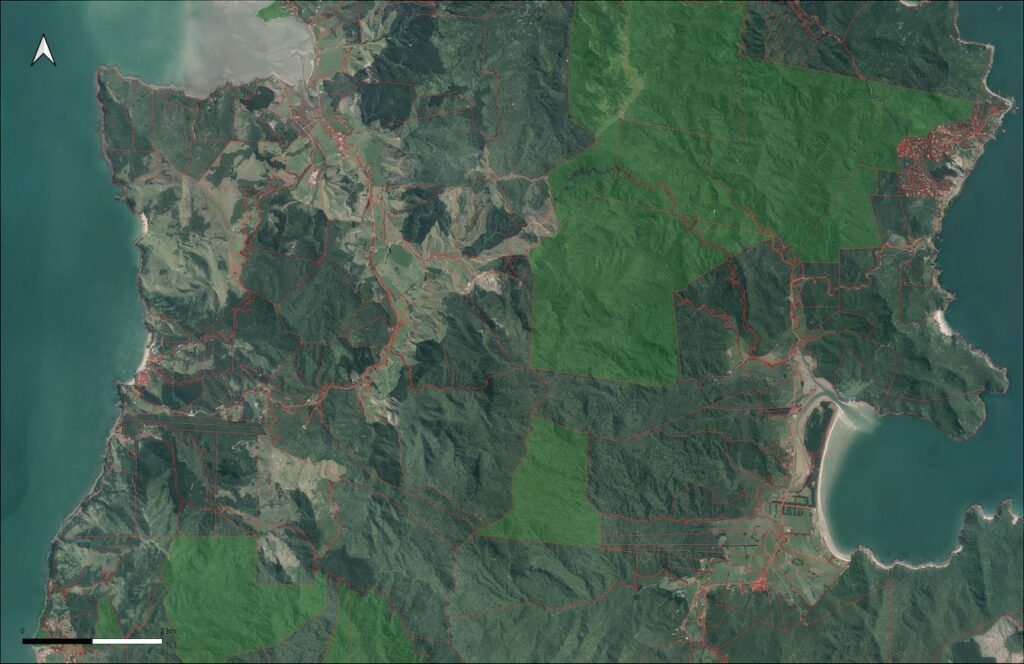The section of land for proposed animal pest control is a band which transects the Coromandel Peninsula from east to west. The ecosystems include a diverse mix of habitats and communities of native plants and animals, as well as exotic species.
As shown in Figure 4, the coastal zones include wetlands and areas which would have been dominated by pohutukawa forest up to about 300m in altitude (1), further inland from the coast (>1km from coast and < 300m in altitude is the Puriri zone (2), and the higher inland parts of the site comprise the tawa-kauri zone at 300-800m alt (3). The area does not include tawari-mountain daisy zone (4), >800m asl.
Dunelands, estuaries, and wetlands have largely been significantly modified and coastal forest and scrub would likely has comprised more parapara, tawapou, whau and ngaio than is present today. Freshwater wetlands remaining today are an estimated 10% of their former extent. Outstanding remnants of flax, raupo and sedges occur behind Kennedy Bay, but elsewhere the wetlands are small and degraded.
A typical semi-coastal forest can be described as a mosaic of puriri, tawa, northern rata, kohekohe and karaka with a possible lower canopy of nikau, pigeonwood, heketara, ponga, mahoe and mapou. Due to the steep nature of the Colville topography, the coastal and semi-coastal influences on vegetation extends some distance inland then changes rapidly to lowland vegetation.




